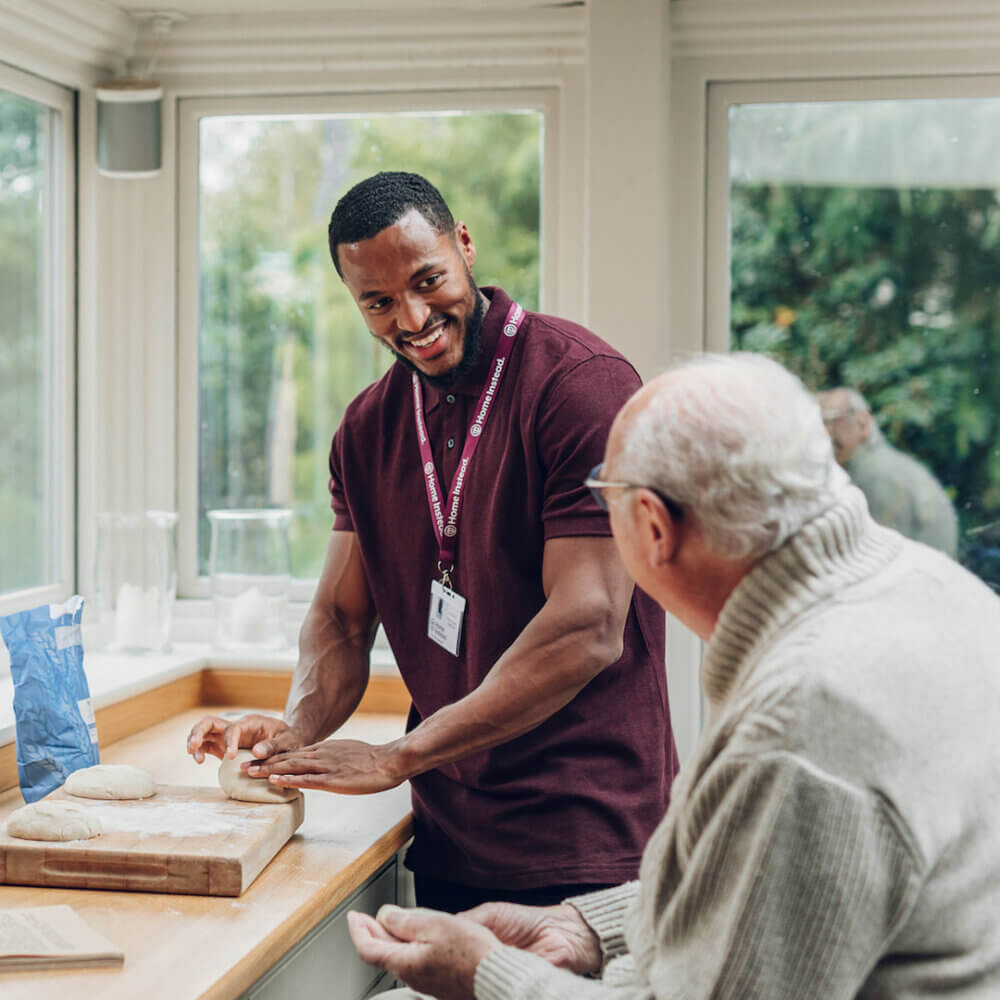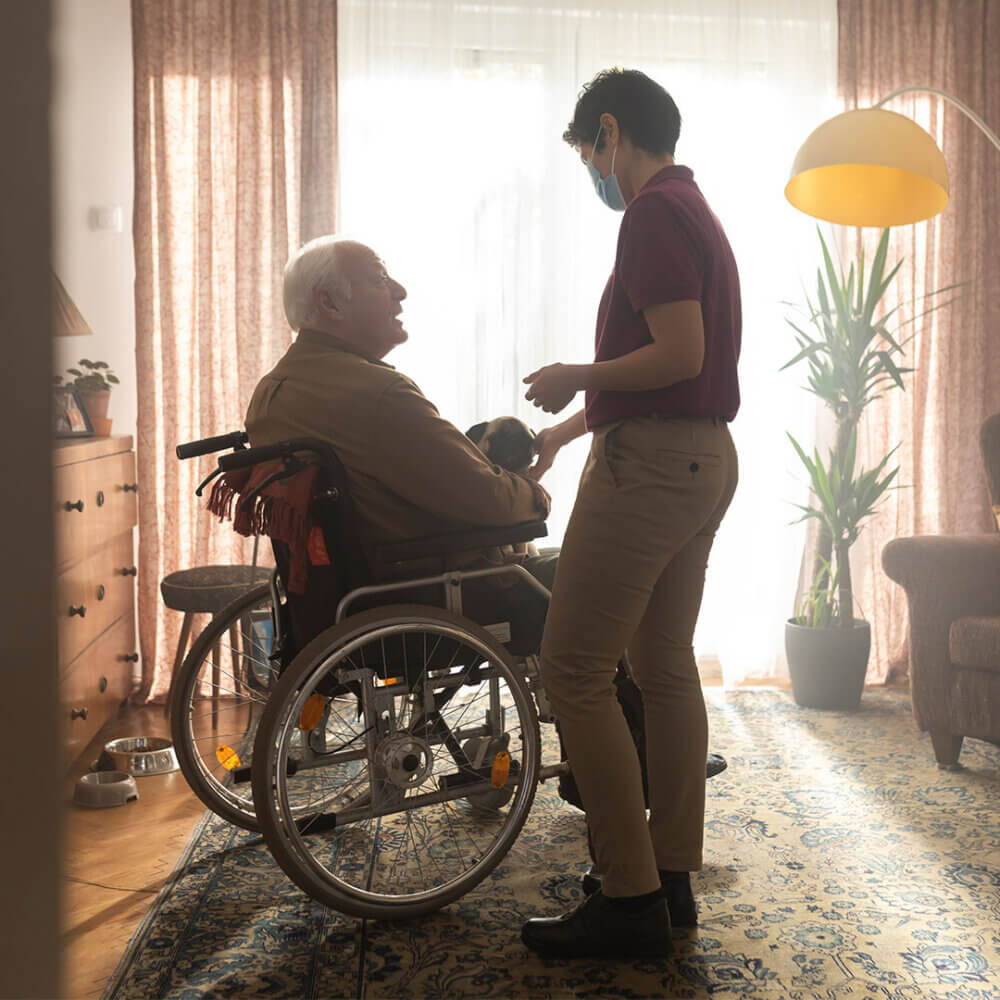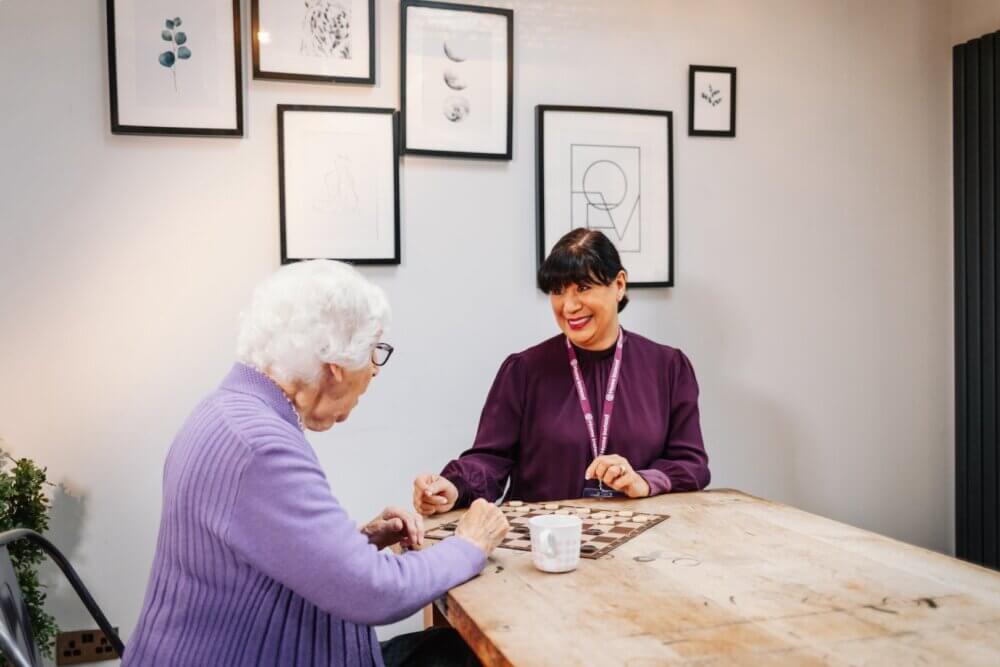Is Your Home Safe for a Loved One with Dementia?
Ensure your home is safe and dementia-friendly with practical tips for lighting, flooring, and technology from Home Instead Reading. Contact us for support!

When a family member is diagnosed with dementia, it can be overwhelming. How do you ensure their home remains a comforting, yet safe place? At Home Instead Reading, we understand how crucial it is to adapt the environment to meet the changing needs of those living with dementia. Here, we share practical tips to create a safer, dementia-friendly home that maintains the warmth of home.

Brighten Their World with Proper Lighting
Lighting can have a significant impact on individuals with dementia. Poor lighting may cause confusion or lead to trips and falls. Here’s how you can make improvements:
- Limit shadows and glare: Use carefully positioned lights that minimise reflection and harsh contrasts, which can be unsettling.
- Maximise natural light: Open curtains during the day and keep windows unobstructed by trimming outdoor foliage.
- Light up high-traffic areas: Install strong lighting in hallways, bathrooms, and staircases for better visibility and navigation.

Flooring Choices That Prevent Confusion
Did you know that certain flooring can actually be disorienting to someone with dementia? Here are a few tips to make the floor safe:
- Avoid rugs and mats: These can be seen as obstacles and cause trips, so it’s best to remove them.
- Choose non-reflective surfaces: Glossy floors can look wet, making your loved one reluctant to walk on them.
- Use contrasting colours: Floor and wall colours should be easy to differentiate. Avoid blue or green shades that may resemble water or grass.

Colours That Help, Not Hinder
Colour can either confuse or help those with dementia navigate their surroundings. Thoughtful choices in décor can make a big difference:
- Bold contrasts: Pick contrasting colours for furniture, walls, and other elements. This can make it easier to distinguish between objects and areas.
- Change key items: Toilet seats, doors, and bannisters in contrasting colours can help your loved one navigate the home with ease.
- Be cautious with patterns: Too many patterns or bold designs can be overwhelming, so keep them subtle.

Clear Labels for Easy Navigation
Simple signs and labels can help someone with dementia move through their home confidently:
- Label cupboards and drawers: Clear labels with words and images can help your loved one know exactly where items are kept.
- Position signs appropriately: Signs should be placed where they can be easily seen—at a lower eye level is often more effective for older adults.

Managing Mirrors and Reflections
Reflections can be confusing for someone living with dementia. Mirrors may cause anxiety or lead to confusion about what they see. To avoid this:
- Remove or cover mirrors: If mirrors cause confusion, try covering them or removing those that aren’t essential.
- Close curtains at night: This can prevent disorienting reflections from windows.

The Role of Assistive Technology
Technology can provide helpful reminders and support for individuals with dementia, enhancing their independence:
- Simple phones and clocks: Choose phones with large buttons and easy-to-read clocks that display the time and date.
- Audio reminders: Devices that offer spoken reminders for daily tasks, like locking doors, can be a real benefit.
- User-friendly apps: Tablets or smartphones can be configured with easy navigation tools designed for dementia care.
Creating a dementia-friendly home doesn’t have to be complicated. By making a few simple changes, you can ensure your loved one remains safe and comfortable in the home they cherish.
At Home Instead Reading, our care professionals are here to provide compassionate dementia care tailored to your loved one’s needs. We can support you in making their home a safe and comforting space. If you’d like to learn more about how we can help, please get in touch.
Contact Home Instead Reading 0118 909 9108
Address:
1st Floor, Elizabeth House,
20-24 School Road, Reading,
Berkshire, RG31 5AL

Areas We Serve
Caversham, Emmer Green, Woodley, Earley, Tilehurst, Pangbourne, Sonning, Henley-on-Thames, Twyford, Wokingham
RG1 1, RG1 2, RG1 3, RG1 4, RG1 5, RG1 6, RG1 7, RG1 8, RG2 0, RG2 6, RG2 7, RG2 8, RG2 9, RG30 1, RG30 2, RG30 3, RG30 4, RG30 6, RG31 4, RG31 5, RG31 6, RG31 7, RG4 5, RG4 7, RG4 8, RG5 3, RG6 1, RG6 3, RG6 4, RG6 5, RG6 6, RG6 7, RG8 7, RG8 8, RG8 9
1st Floor, elizabeth house, 20-24 School Rd, Tilehurst, Reading RG31 5AL, UK